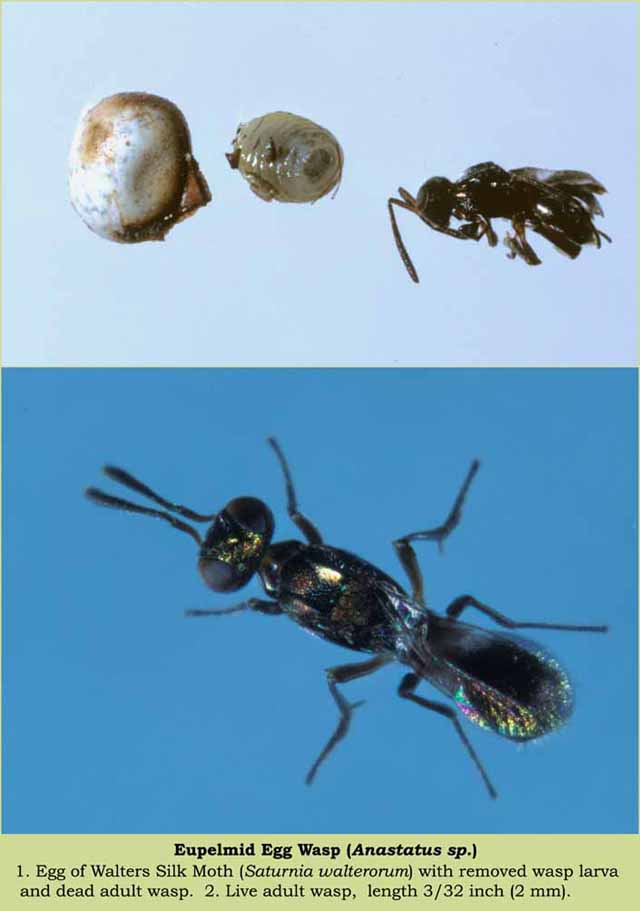Parasitoids of the Wild Silk Moths (Saturniidae)
by Kirby L. Wolfe


Eupelmid Egg Wasp (Anastatus sp.). Members of the family of small wasps called Eupelmidae are often hyperparasitoids or egg parasitoids. Hyperparasitoid larvae may live inside parasitoid larva which may live inside moth larvae. One genus of eupelmid wasp is Anastatus, whose many tiny species are all parasitoids of insect eggs.
The wasp pictured here is a species of Anastatus that emerged from an egg of the Walters Silk Moth (Saturnia walterorum). The adult is like a tiny ant, about 3/32 inch (2 mm) long.
Most wild silk moths place their eggs in groups, and, if a female wasp finds them, she walks around on the eggs pushing her ovipositor (stinger) through each eggshell to place a wasp egg inside. If the female wasp has mated with a male, her eggs will develop into males and females, but if she has not found a mate before ovipositing (laying), all the wasps that develop from her eggs will be males. Sometimes more than 90% of a moth’s group of eggs will contain wasp larvae.
Reference: Richard S. Peigler. Catalog of Parasitoids of Saturniidae of the World. Journal of Research on the Lepidoptera 33:1-121, 1994.
Return to Kirby Wolfe Index
Return to Parasitoids Index
You are here: Eupelmids: Anastatus; tiny species; parasitoids of insect eggs
Go to Belvosia nigrifrons; Tachinidae fly species
Go to Cotesia electra: the Electra Braconid Wasp,